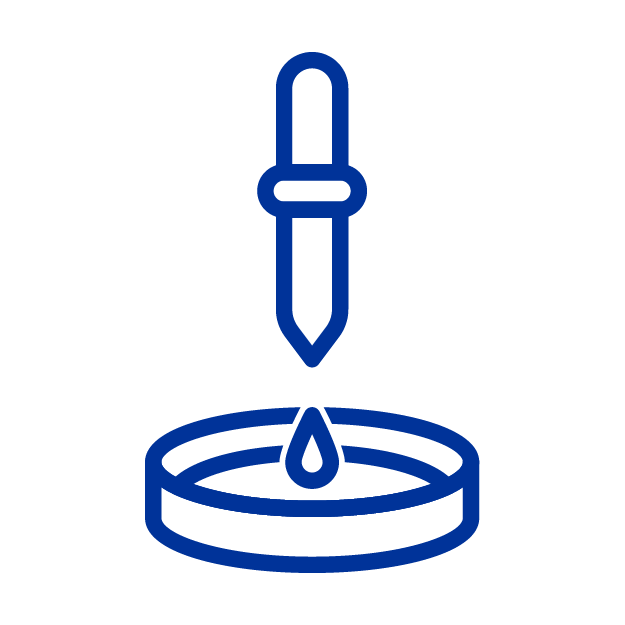PFAS IN SOILS & OTHER SOLIDS
Home / PFAS Matrices / PFAS in Soils & Other Solids
Pace® works with industry and local leaders to help protect their communities with advanced PFAS testing services for soil and a wide range of other solids.
THE SOURCE OF PFAS IN SOIL
Soil can become contaminated with PFAS in a variety of ways, such as wastewater discharge, biosolids, incinerator ash, and more. Through plant uptake, this PFAS can travel to the food we eat. Drinking water sources can also be contaminated through runoff into local waterways and seepage into underground aquifers.
CERCLA CHANGES THE PFAS REGULATORY LANDSCAPE
In 2024, the EPA finalized a rule designating PFOA and PFOS hazardous substances under the Comprehensive Environmental Response, Compensation, and Liability Act (CERCLA). This gives the EPA the authority to designate a site a Superfund site and issue cleanup orders for PFOA and PFOS releases – past or present. Cases that were closed years ago may even be reopened. While the EPA’s focus is on holding polluters accountable, some property owners express concern that they could be held responsible for contamination they didn’t cause.
PFAS TREATABILITY STUDIES
Pace® PFAS Treatability Studies help clients evaluate the effectiveness of technologies and strategies for PFAS removal, remediation, and destruction. By conducting a Treatability Study, environmental engineers and scientists can optimize remediation strategies, ensure regulatory compliance, and build public trust.
STATES GET AGGRESSIVE WITH PFAS POLLUTERS
Many states are promising action against PFAS polluters as well. For example, Washington State has already declared PFAS a hazardous substance under its Model Toxics Control Act. This state law gives the WA Department of Ecology the authority to assess sites suspected of being contaminated with PFAS and to issue remediation and cleanup orders. Currently, Washington is targeting PFOA, PFOS, PFNA, PFHxS, PFBS, and Gen X. Other states, such as New Jersey, are establishing soil remediation standards for specific PFAS, including PFOA, PFOS, PFNA, and GenX.
REQUEST A PFAS BRIEFING FOR YOUR STATE
Pace® offers PFAS testing services across the country through its nationwide network of certified and accredited labs. Our experts can bring your compliance and risk-management teams up to speed quickly on current and pending PFAS action in your area.PRIMARY PFAS TEST METHODS FOR SOIL & OTHER SOLIDS
Multiple test methods can be used to analyze for PFAS in soil and other solids. If you are complying with state sampling mandates, always check to see if a specific test method is required in your state.

ASTM D8421/Method 8327
A rapid, definitive method for analyzing PFAS in aqueous and solid matrices utilizing LC/MS/MS and isotope dilution

EPA 1633
A method for analyzing up to 40 PFAS compounds in non-potable water, solids, landfill leachate, and biota

PFAS by Isotope Dilution
A test method developed by Pace® for analyzing targeted PFAS in matrices other than drinking water

TOP Assay
A method for analyzing PFAS precursors in liquid and solid matrices
SPECIALTY TESTING SERVICES FOR PFAS IN SOLIDS
Remediating PFAS in soil often requires locating the source of that PFAS. Pace® has developed testing methods and protocols for analyzing PFAS across several vectors of contamination.

AFFF
Used to fight chemical and aviation fires

Bedrock
Unique sampling prep required

Biosolids
Land-applied as fertilizer

Incinerator ash
For particles of incomplete combustion (PICs)
PFAS MATTERS
Stay up to date on PFAS in the news and get opinions from Pace® PFAS experts by subscribing you our blog: PFAS Matters.
REASONS TO CHOOSE PACE®

EXPERIENCED
Pace® has been an industry leader in persistent organic pollutant testing for over three decades.
CERTIFIED
We’re certified/accredited by NELAC, ISO, DOD, DOE, and in every state with a PFAS lab certification program.

RELIABLE
For emergencies, our Rapid Response Team can provide defensible results in as little as 24 hours.

COMMITTED
We are committed to helping our customers advance their important work through building strong relationships, delivering upon expectations, and providing exceptional customer service.

ADVANCED
We can test for PFAS in both solid and aqueous matrices, including potable and non-potable waters, soils, and biota.

INNOVATIVE
We’re on the leading edge of science, working with EPA, DOD, ASTM, and others to develop new methods for analyzing PFAS.




